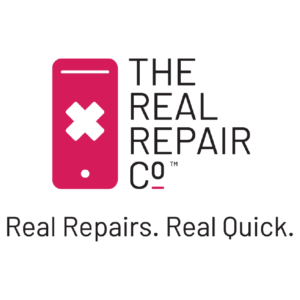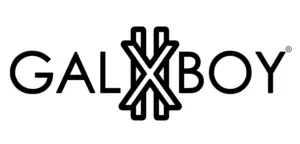Fraud prevention is a big problem for eCommerce businesses. Globally, eCommerce fraud has reached billions of Rands. That’s a lot of money that should be going into your business instead of the pockets of criminals. Without the right eCommerce fraud prevention strategies, your business could fall prey to this unlawful practice.
What’s more, it’s not just the financial loss that’s a problem. The hassle associated with resolving fraudulent transactions robs you of precious time and causes overwhelming stress.
eCommerce fraud prevention strategies can help you protect your business and customers. The good news is that there are myriad options available to you! We’ll lay out your options in a bit so that you can make the choice that’s best for your business.
First off – how do you define eCommerce fraud?
We can help you with that! Loosely defined, eCommerce fraud is any false, illegal, or illegitimate commercial transaction which takes place online. eCommerce fraud falls under a few sub-headings, depending on what kind of fraudulent activity has taken place.
The different kinds of eCommerce fraud
Transaction fraud
The most common kind of eCommerce fraud occurs when a stolen credit card is used to make a transaction online. A fraudster gets hold of a credit card number and uses it to buy something at your online store. You process the payment, and the real cardholder is alerted to a transaction that they didn’t make themselves. Naturally, the cardholder contacts their bank and initiates a chargeback process to get their money back.
The chargeback system exists to protect the cardholder, and we’re not saying that’s a bad thing. What is unfortunate, however, is that the responsibility falls on the merchant to refund the payment. That’s a loss for your business. You do have the option of disputing the chargeback, but it’s a complicated and lengthy process. Most of the time, merchants find it easier simply to accept the loss.
Friendly fraud
Unfortunately, friendly fraud is anything but friendly! Friendly fraud can happen by mistake, but it is committed intentionally as well. Basically, a customer will order and pay for a product from your online store. But, here’s the kicker: they’ll later claim that the product was never delivered, or that it was damaged in transit.
Another type of common friendly fraud is known as “wardrobing”. This is an especially big problem for clothing stores. A customer will purchase clothing, wear it for a short period of time, and then return it for a refund under the pretence that it was ill-fitting or not to their taste.
Typically, the merchant then has to issue a refund, deliver a new product, or face the dreaded chargeback. Nobody wants to have to do that!
Triangulation fraud
Triangulation fraud is so named because it involves three elements. Here’s how it works, step-by-step:
- First, a legitimate cardholder makes a purchase from a false online store.
- The fraudulent store will then take the cardholder’s payment as well as any personal data that they can get out of the cardholder.
- Using a different (likely stolen) card, the fraudster buys an item from your legitimate store at full price and ships it to the original cardholder, who is none the wiser. The thief pockets the cardholder’s money, and you’re left to deal with a fraudulent purchase that the cardholder might demand chargeback for.
What fraud prevention strategies can I use to protect my business and customers?
So, what fraud prevention strategies can you employ to stop fraudulent activity from affecting your store? Well, prevention is better than cure. The best eCommerce fraud prevention strategy is to identify dodgy transactions before they happen in the first place. There are a few ways to do this.
Address verification
For one, you can employ an Address Verification Service (AVS). An AVS reduces the risk of eCommerce fraud by comparing the billing address against the address listed with the bank involved in the transaction. If they don’t match, then AVS flags the transaction as potentially fraudulent.
3D Security
3D Secure or 3DS is an opt-in technology that requires your customer to enter a predetermined security code before their purchase is processed. This means that the transaction cannot take place without the legitimate cardholder’s authorisation. There’s no way for a fraudster to know what the security code is, and the transaction cannot be successfully completed without it.
Thankfully, the Payment Association of South Africa (PASA) mandated that 3D Secure technology be implemented for all online credit card transactions (aka card not present or CNP transactions) as of 28 February 2014. Most payment gateways used by South African eCommerce merchants offer 3D Secure payments, like SiD Secure EFT and PayFast.
You can read more about the best payment gateways for your business.
eCommerce fraud prevention best practices
You can, of course, always take things into your own hands. There are a few tips and tricks that you can use to reduce the risk of fraudulent transactions which could affect your business.
- mandate strong passwords for your customers’ online shopping profiles, and encourage them to regularly update them
- ask customers to create personal accounts for future purchases from your site
- update yourself on ever-evolving fraud tactics
- practise vigilance and check out transactions that don’t look right to you
Nobody is going to care more about the safety of your business and your customers’ information than you. You can take the power into your own hands and implement these eCommerce fraud prevention strategies for the benefit of everyone involved in your transactions.
Conclusion
Fraud is rife in online purchases, and implementing effective eCommerce fraud prevention strategies requires hard work. But, with the right resources and a touch of vigilance, you can keep your business safe from falling prey to thieves and tricksters. The Payflex merchant blog is always full of helpful resources to help you operate your business as best you can!























































